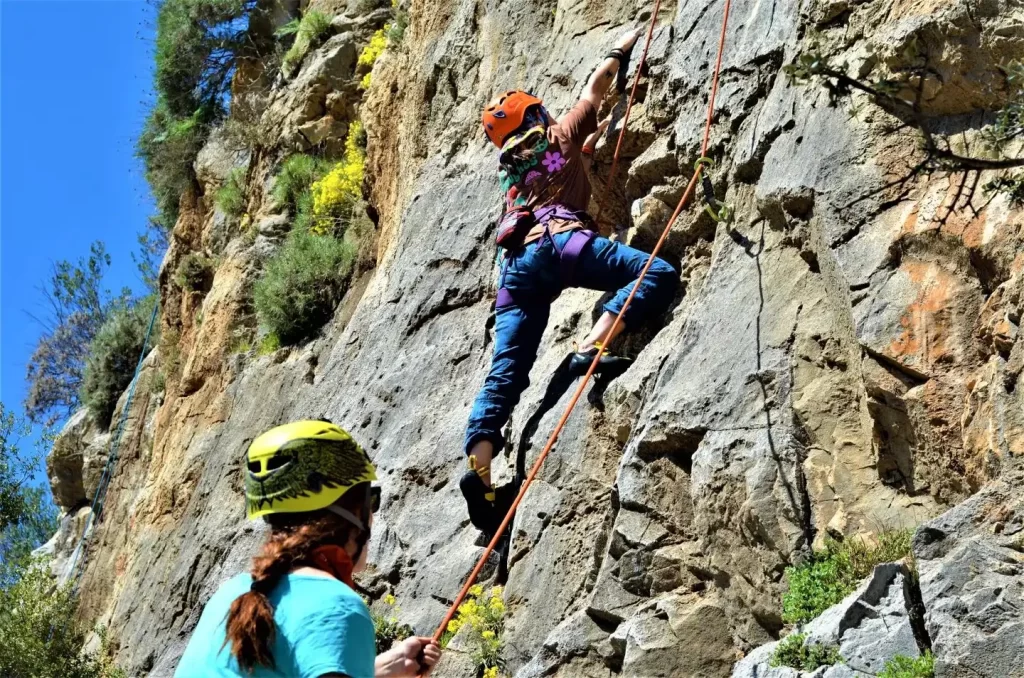Helmets for Mountaineering and Rock Climbing: Why They Are Essential for Your Safety
Mountaineering and rock climbing are two exhilarating outdoor activities that require physical strength, skill, and mental toughness. However, they also come with inherent risks and dangers, which is why safety should always be your top priority. One of the most important pieces of gear you should invest in for your safety is a helmet.
A helmet is a crucial piece of gear for any mountaineer or rock climber. It is designed to protect your head from the impact of falls, rockfall, ice, or any other debris that may come your way. The high altitude and rugged terrain of mountainous areas make it all the more important to take safety precautions seriously.
In addition to protecting your head, a helmet can also boost your confidence while climbing. When you’re climbing, you need to focus on your technique, balance, and surroundings. Worrying about getting hit by rocks or other debris can distract you from your climb and make you hesitant. A helmet gives you peace of mind and allows you to focus solely on your climb, helping you perform better and enjoy the experience to the fullest.
When selecting a helmet, it’s important to choose one that fits comfortably and securely. The helmet should cover your forehead, temples, and the back of your head, leaving no gaps or exposed areas. It should also be lightweight and well-ventilated, so you can wear it for long periods of time without feeling uncomfortable or overheated.
There are different types of helmets available for mountaineering and rock climbing, each with its own set of advantages and disadvantages. Foam helmets are lighter and more comfortable, while hardshell helmets offer maximum protection against sharp impacts and penetration. Your choice of helmet will depend on the type of climb you’re doing and your personal preferences.
In conclusion, a helmet is an essential piece of gear for any mountaineer or rock climber. It not only protects your head but also boosts your confidence and allows you to focus on your climb. When choosing a helmet, make sure it fits well, is lightweight, and offers the appropriate level of protection for your needs. Investing in a good-quality helmet is investing in your safety and the success of your climb.
Why Wear a Helmet?
A helmet is a protective gear that is worn on the head to reduce the risk of head injury in the event of a fall, rockfall, or any other impact. When you’re climbing or mountaineering, falling rocks, ice, or equipment can easily hit your head, causing serious injury or even death. A helmet is designed to absorb the impact and distribute the force over a larger surface area, thus reducing the risk of skull fracture or brain injury.
In addition to protecting against falling debris, a helmet can also protect your head from hitting the ground or rock face during a fall. When you’re climbing or mountaineering, falls are an inherent risk, and even a short fall can lead to serious head injury if you hit your head on a hard surface. A helmet can reduce the force of impact and prevent potentially life-threatening injuries.
Furthermore, a helmet can boost your confidence and allow you to focus on your climb. When you know you’re protected, you can climb more confidently and perform better. A helmet can also protect you from the elements, such as sun, rain, or snow, which can be especially important when climbing at high altitudes.
Wearing a helmet is not just important for your own safety, but also for the safety of those around you. In group climbing or mountaineering, one person’s fall can cause rocks or other debris to fall and hit other climbers. By wearing a helmet, you’re not only protecting yourself but also reducing the risk of injury to others.
In conclusion, wearing a helmet is essential for anyone participating in climbing or mountaineering activities. It can protect against head injuries, boost confidence, and enhance performance. When choosing a helmet, make sure it fits well, is lightweight, and offers the appropriate level of protection for your needs. Always prioritize safety and wear a helmet on every climb, no matter how short or easy it may seem.
What to Look for in a Climbing Helmet?
In addition to these factors, you should also consider the type of climbing you’ll be doing. For example, if you’ll be climbing in hot and humid conditions, a helmet with good ventilation may be more important. If you’ll be doing multi-pitch climbs, a lightweight helmet may be more comfortable for extended periods of wear.
It’s also worth considering the type of shell material used in the helmet. Hardshell helmets are more durable and offer better protection against sharp impacts, while softshell helmets are more lightweight and comfortable but may not be as durable.
Another important feature to consider is whether the helmet has a chin strap or not. Chin straps are essential for ensuring that the helmet stays in place during a fall or impact.
When trying on helmets, make sure to wear them for an extended period of time to get a feel for the fit and comfort. Try adjusting the straps and dial to ensure a snug and secure fit.
Overall, choosing the right climbing helmet is an important decision that should not be taken lightly. By considering factors such as fit, weight, ventilation, durability, and safety certifications, you can find a helmet that offers the best protection and comfort for your specific needs.
When choosing a climbing helmet, there are several factors to consider, such as fit, weight, ventilation, durability, and safety certifications. Here are some tips to help you choose the right helmet for your needs:
- Fit: The helmet should fit snugly on your head, without any gaps or movement. Most helmets come with adjustable straps and a dial at the back for a custom fit.
- Weight: A lightweight helmet is more comfortable and less tiring to wear, especially on long climbs.
- Ventilation: Look for a helmet with good ventilation to keep your head cool and prevent sweat buildup.
- Durability: A durable helmet is essential for protection against repeated impacts and wear and tear.
- Safety certifications: Make sure the helmet is certified by recognized safety standards, such as UIAA or CE, to ensure that it meets the minimum safety requirements for climbing and mountaineering.
Types of Climbing Helmets
It’s important to note that foam helmets may not offer the same level of protection as hardshell helmets against sharp impacts or penetration. However, they are still designed to absorb impact and protect against falls and other types of impacts.
When choosing between a hardshell and foam helmet, consider the type of climbing you’ll be doing and the level of protection you need. If you’ll be doing more technical climbs that involve ice or mixed climbing, a hardshell helmet may be the better choice. If you’ll be doing more sport climbing or gym climbing, a foam helmet may be more suitable.
It’s also worth noting that some helmets combine the features of both hardshell and foam helmets. These hybrid helmets typically have a hardshell outer layer for maximum protection and a foam inner layer for added comfort and impact absorption.
No matter which type of climbing helmet you choose, it’s important to remember that it is a crucial piece of safety gear. A properly fitted and certified helmet can mean the difference between a minor injury and a life-threatening one in the event of a fall or impact. Always prioritize safety and choose a helmet that is suitable for your specific needs and the type of climbing you’ll be doing.
There are two main types of climbing helmets: hardshell and foam.
- Hardshell helmets are made of a hard, durable shell that provides maximum protection against sharp impacts and penetration. They are ideal for ice climbing, mixed climbing, and mountaineering.
- Foam helmets are made of foam that is designed to absorb impact and distribute the force over a larger surface area. They are lightweight and comfortable, making them ideal for sport climbing and gym climbing.
Conclusion
In conclusion, a helmet is an essential piece of gear for mountaineering and rock climbing, and should always be worn to reduce the risk of head injury. When choosing a helmet, make sure it fits well, is lightweight, has good ventilation, is durable, and meets recognized safety certifications. Investing in a good-quality climbing helmet is an investment in your safety and well-being.





